Establishment of KRAS-G12C inhibitor induced resistant tumor models enable the development of new generation KRAS-G12C inhibitors and combinatorial strategies
AACR Annual meeting 2021
Authors: Gaoxiang Liu, Xiujuan Wu, Yajie Xiong, Wenting Shi, Qingyang Gu, Qunsheng Ji. WuXi AppTec, Suzhou, China
Corresponding Author: Qunsheng Ji. Email: ji_qunsheng@wuxiapptec.com
Background
The KRAS (Ki-ras2 Kirsten rat sarcoma viral oncogene homolog) gene is one of the most popular oncogenes in the recent targeted therapy research. Activating KRAS mutations including G12C, G12D, etc are detected in around 25% of human cancers. The most common KRAS mutation is G12C, which comprises nearly 15% of lung adenocarcinoma, 8% of colorectal carcinoma and 4% of pancreatic adenocarcinoma. AMG-510 from Amgen and MRTX849 from Mirati Therapeutics both targeting KRASG12C mutant have shown encouraging activities in early clinical trials, especially shown a better overall response rate (ORR) and disease control rate (DCR) in KRASG12C mutant non-small cell lung cancer (NSCLC). However, acquired resistance to KRAS-G12C inhibitors will occur after prolonged treatment, which limits the effective evaluation in clinical trials. Various combinatorial strategies have been tried to overcome the resistance to KRAS-G12C inhibitors, including co-targeting vertical Ras signaling pathway and combining KRAS-G12C inhibitors with chemotherapeutics or immunotherapies.
Method
In order to facilitate the development of KRAS-G12C inhibitors, we have established an AMG510 resistant MIA PaCa-2 pancreatic adenocarcinoma CDX model and lung, colorectal carcinoma PDX models. These resistant models were derived from sensitive models carrying KRASG12C mutation, by prolonged treatment of AMG510 after several in vivo passages until a stable drug resistance phenotype occurred. To explore the resistant mechanisms, we performed Western blotting on downstream effectors ERK and found AMG510 produced less inhibition effect on ERK phosphorylation level in the resistant models.
Results
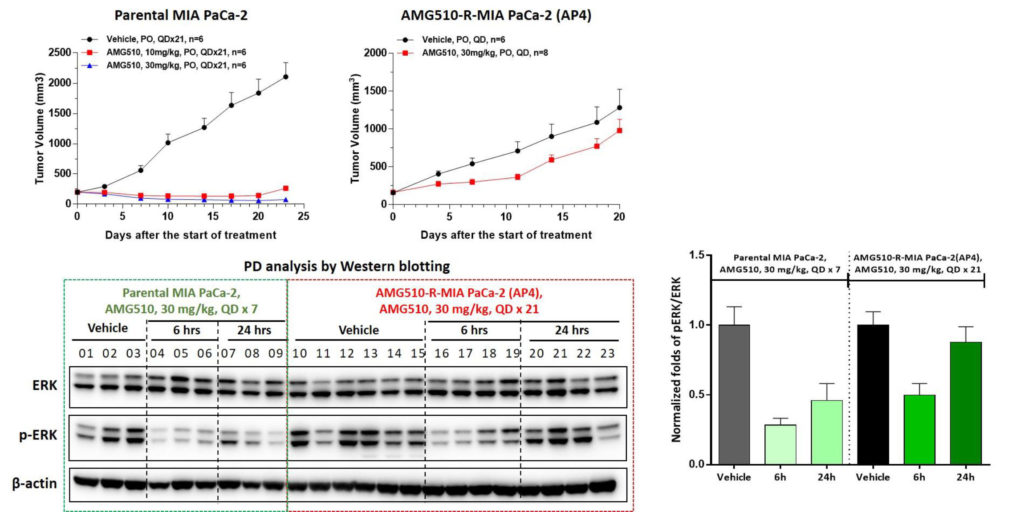
AMG510 produces less antitumor activity in AMG510-R-MIA PaCa-2 (AP4) model. AMG510 produces less inhibition effect of p-ERK in AMG510-R-MIA PaCa-2 (AP4) model.
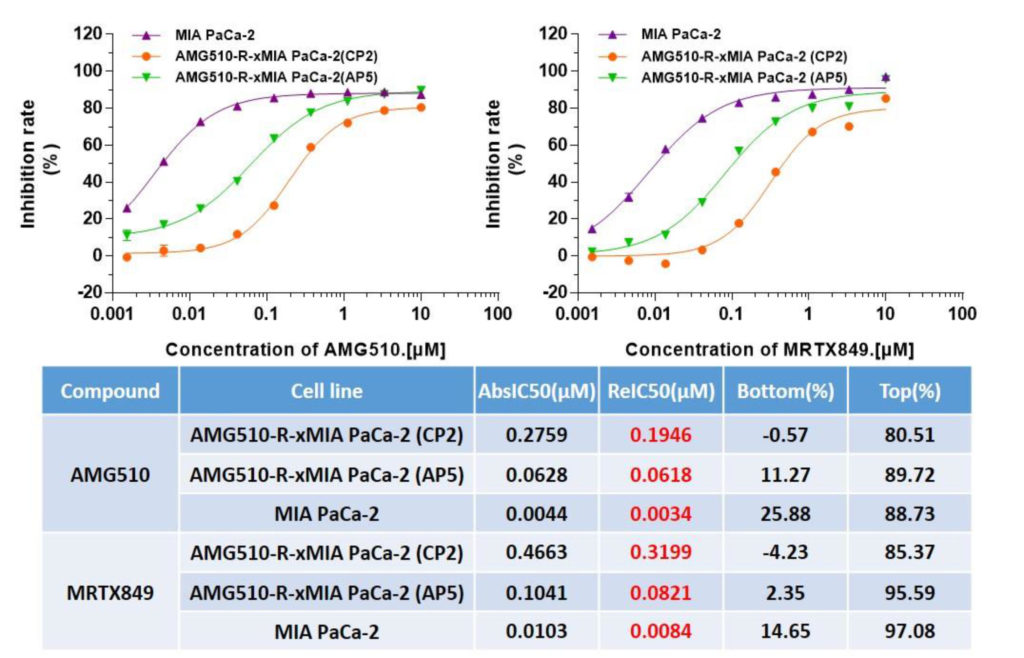
AMG510-R-xMIA PaCa-2 (CP2) cell line was derived from CP2 tumor. STR test indicates it is 100% matched with parental MIA PaCa-2 cell line. AMG510-RxMIA PaCa-2 (CP2) cell line is less sensitive to AMG510, with a 60 fold increase of IC50 value compared with Parental MIA PaCa-2 cell line. Besides, it is also less sensitive to MRTX849, with a 40 fold increase of IC50 value.
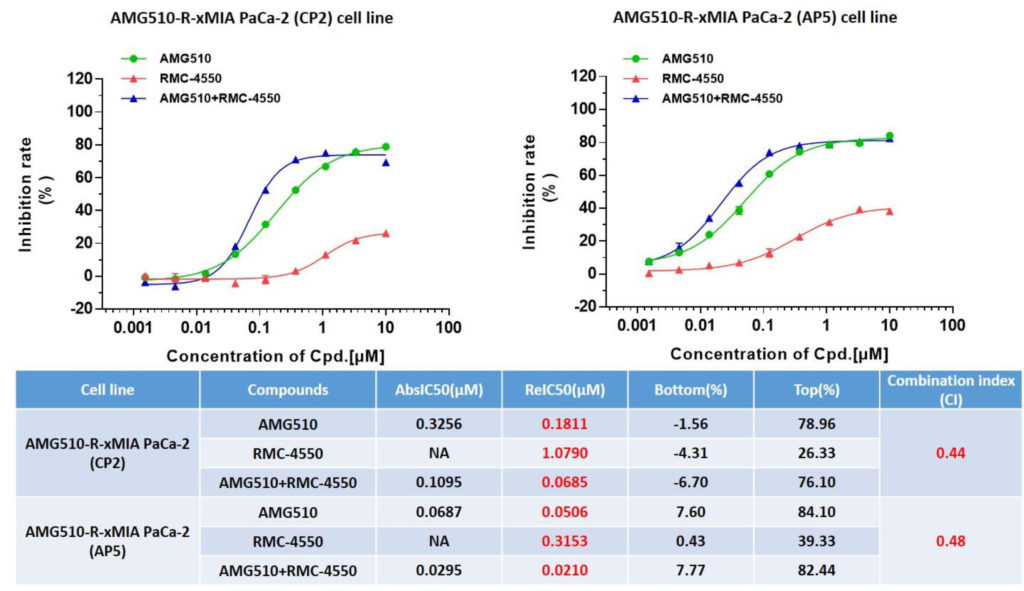
Combination of AMG510 with SHP2 inhibitor RMC-4550 showed synergistic effect in both AMG510-R-xMIA PaCa-2 (CP2) and (AP5) cell lines. CI interpretation: CI<0.9, synergism; 0.91.1, antagonism.
Table 1 Combination index for AMG510
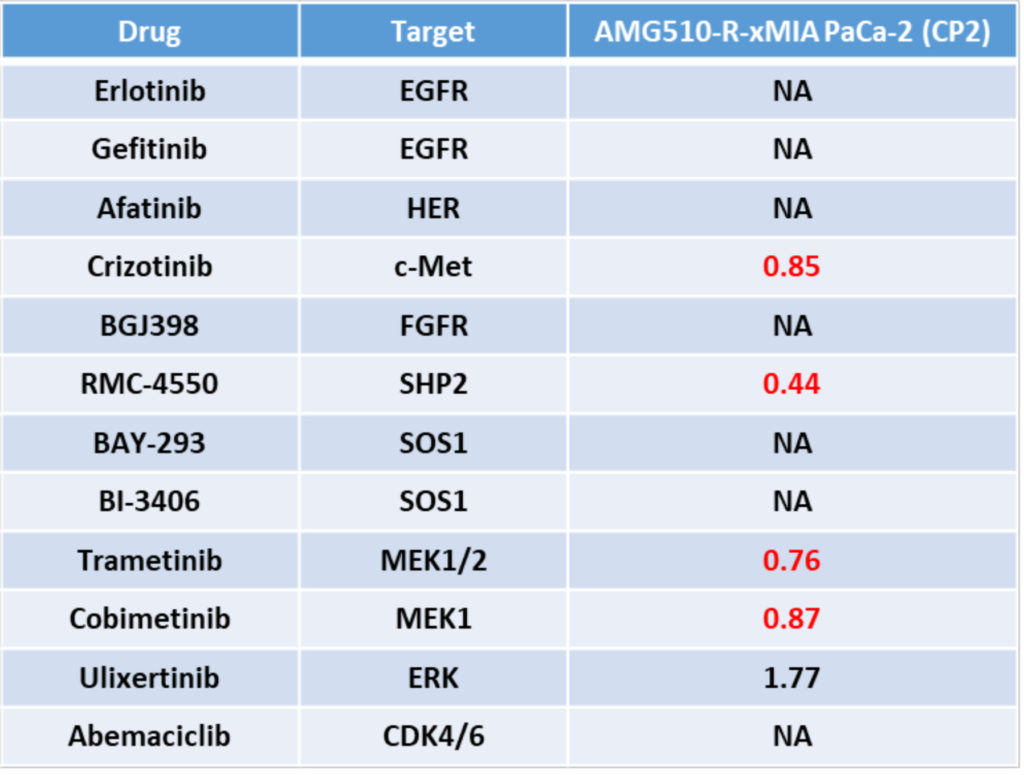
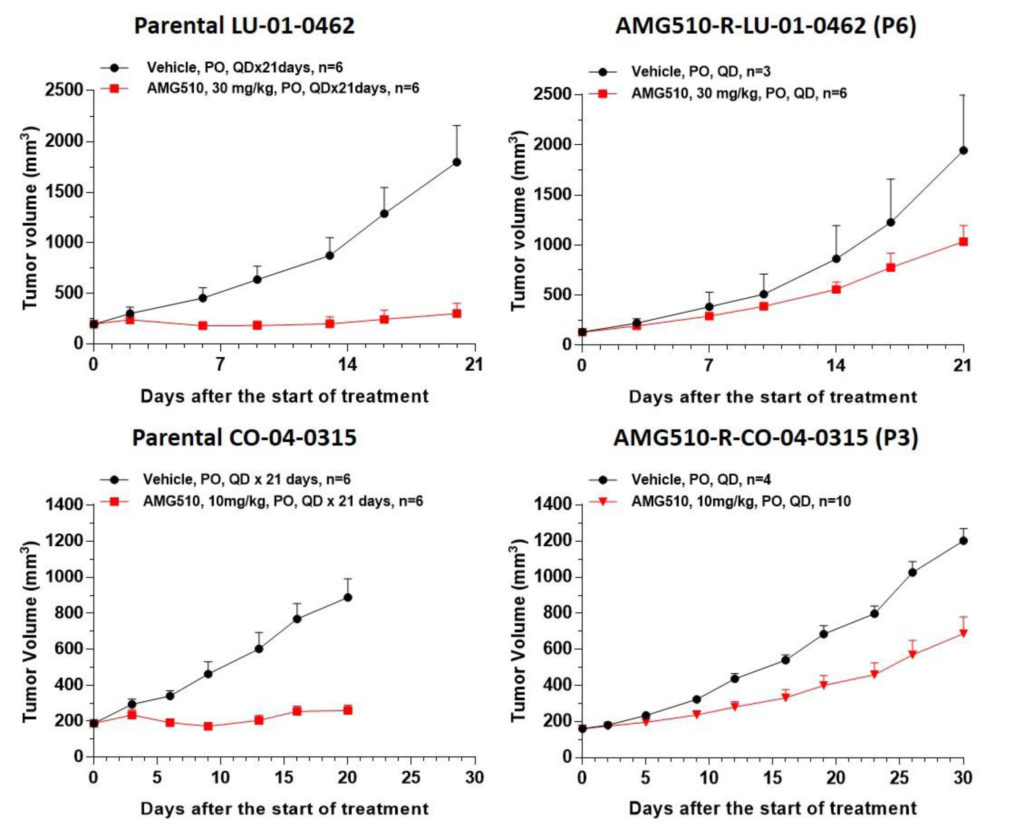
AMG510 produces less anti-tumor activity in AMG510-R-LU-01-0462 (P6) lung carcinoma PDX model and AMG510-R-CO-04-0315 (P3) colorectal carcinoma PDX model.
Conclusion
We are also developing more KRAS-G12C inhibitor induced resistant CDX/PDX models, which could be used as a new tool to evaluate new generation of KRAS-G12C inhibitors as well as the combinatorial strategies with KRAS-G12C inhibitors.
Reference
- Delong Jiao, Shengyu Yang. Overcoming Resistance to Drugs Targeting KRAS G12C Mutation. The Innovation 1, 100035, August 28, 2020. doi: https://doi.org/10.1016/j.xinn.2020.100035

